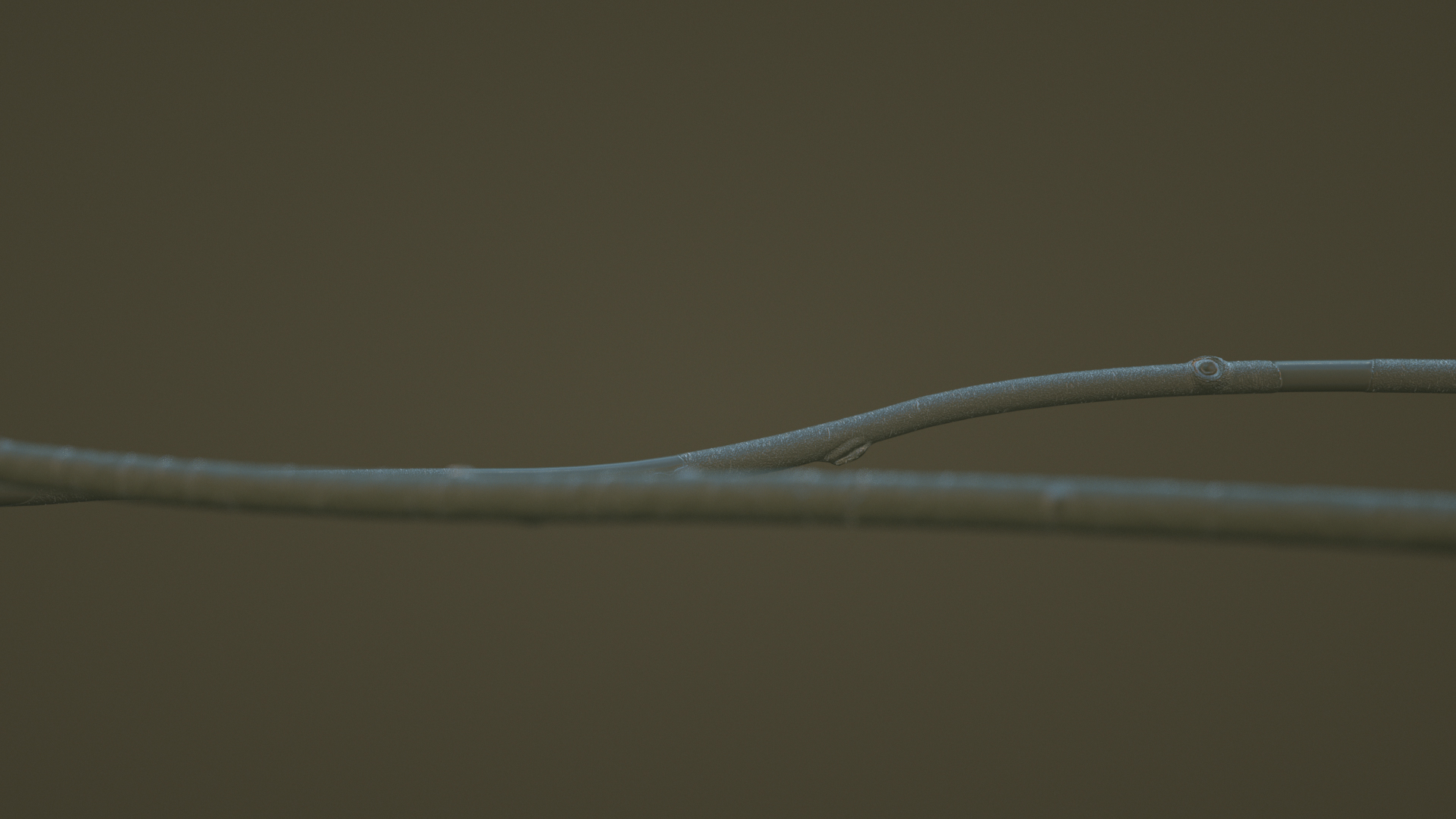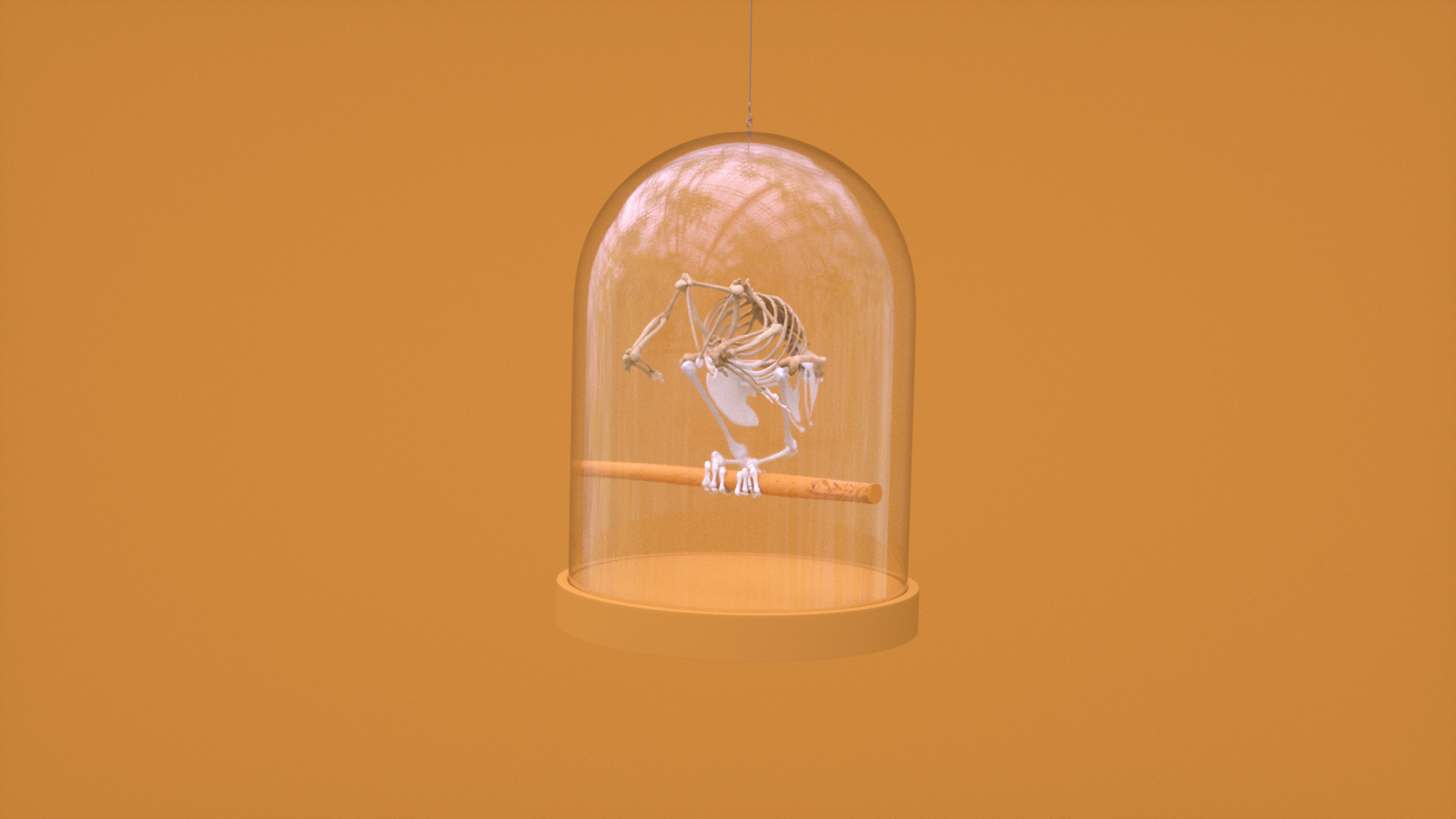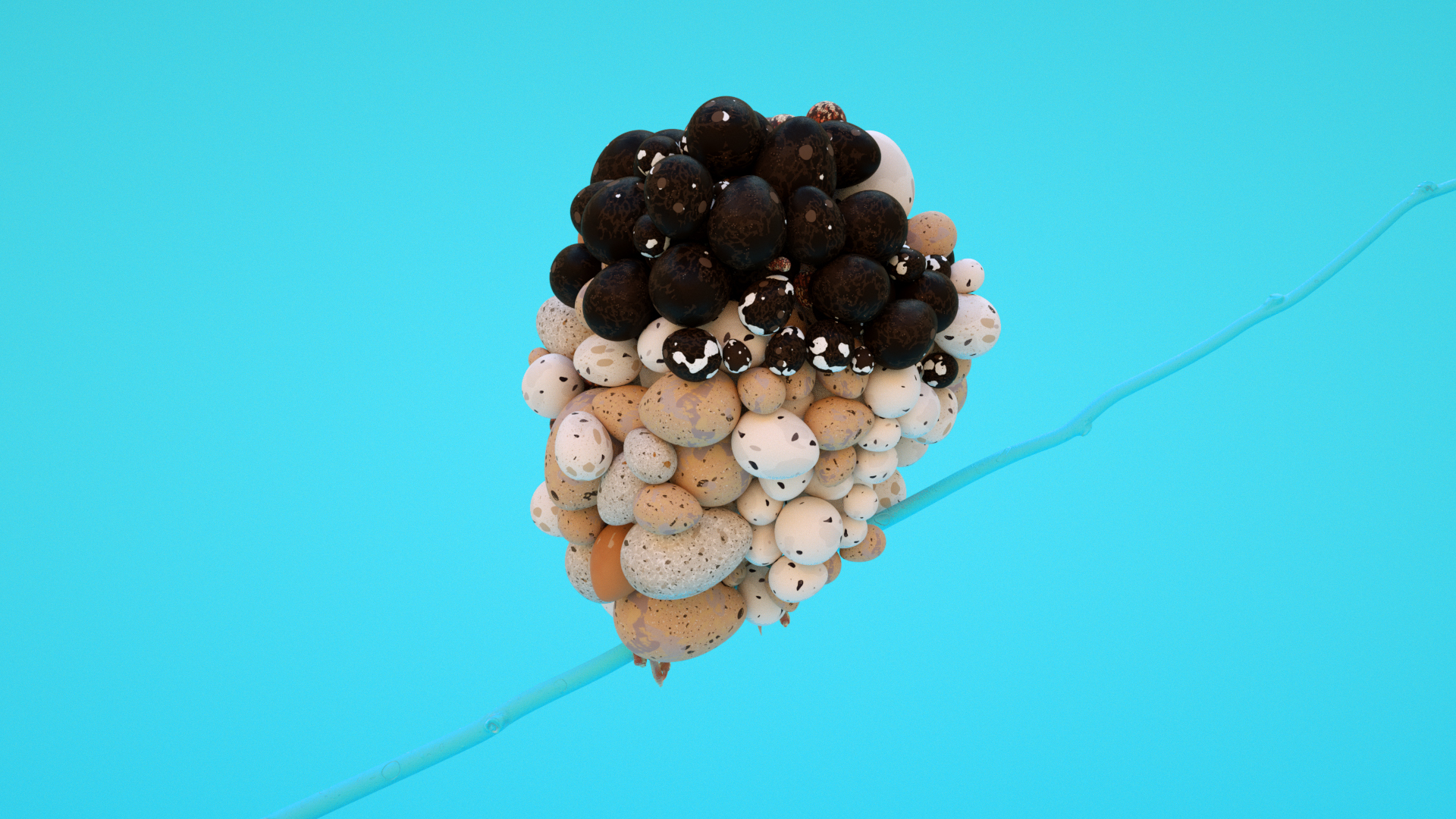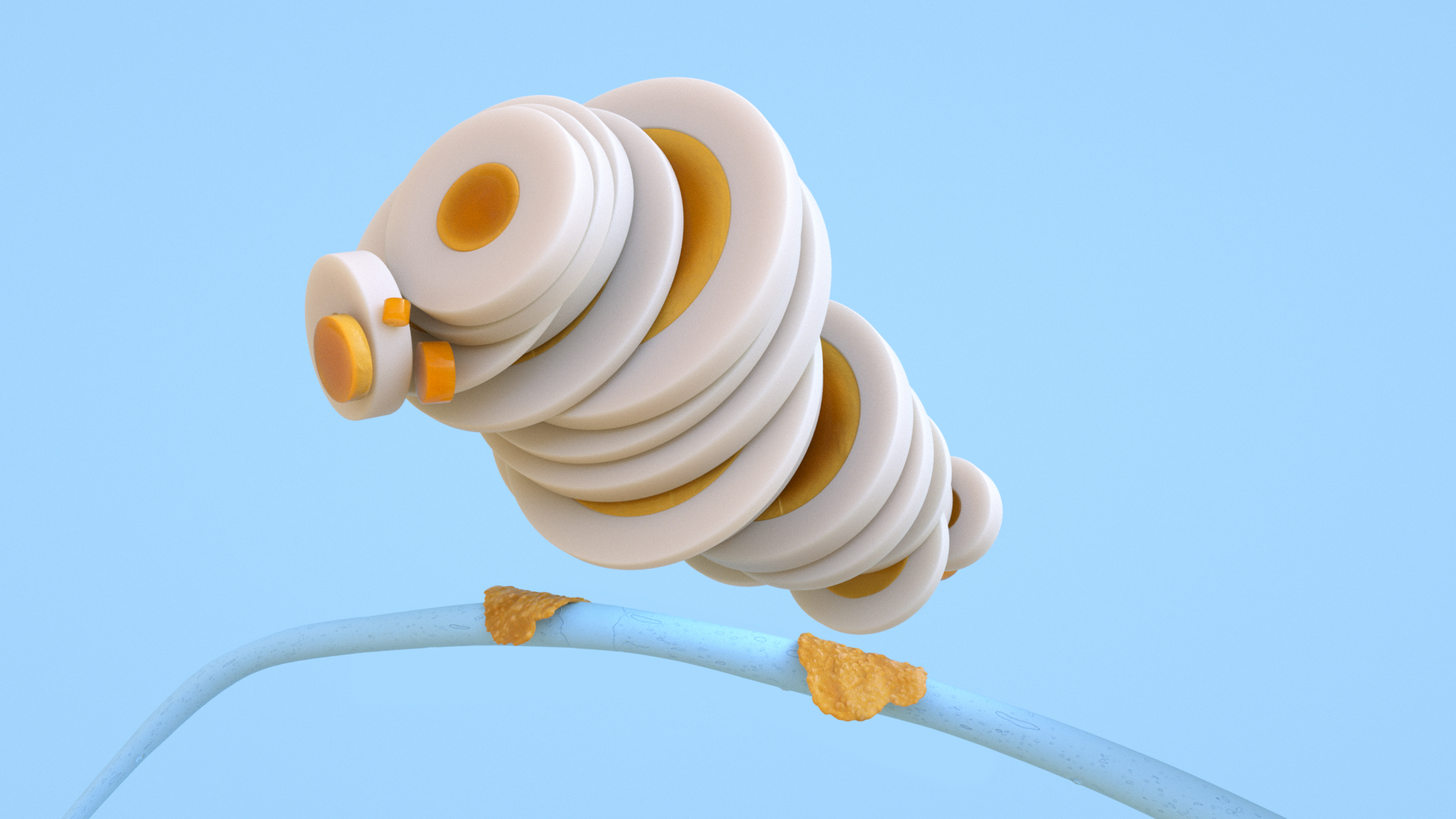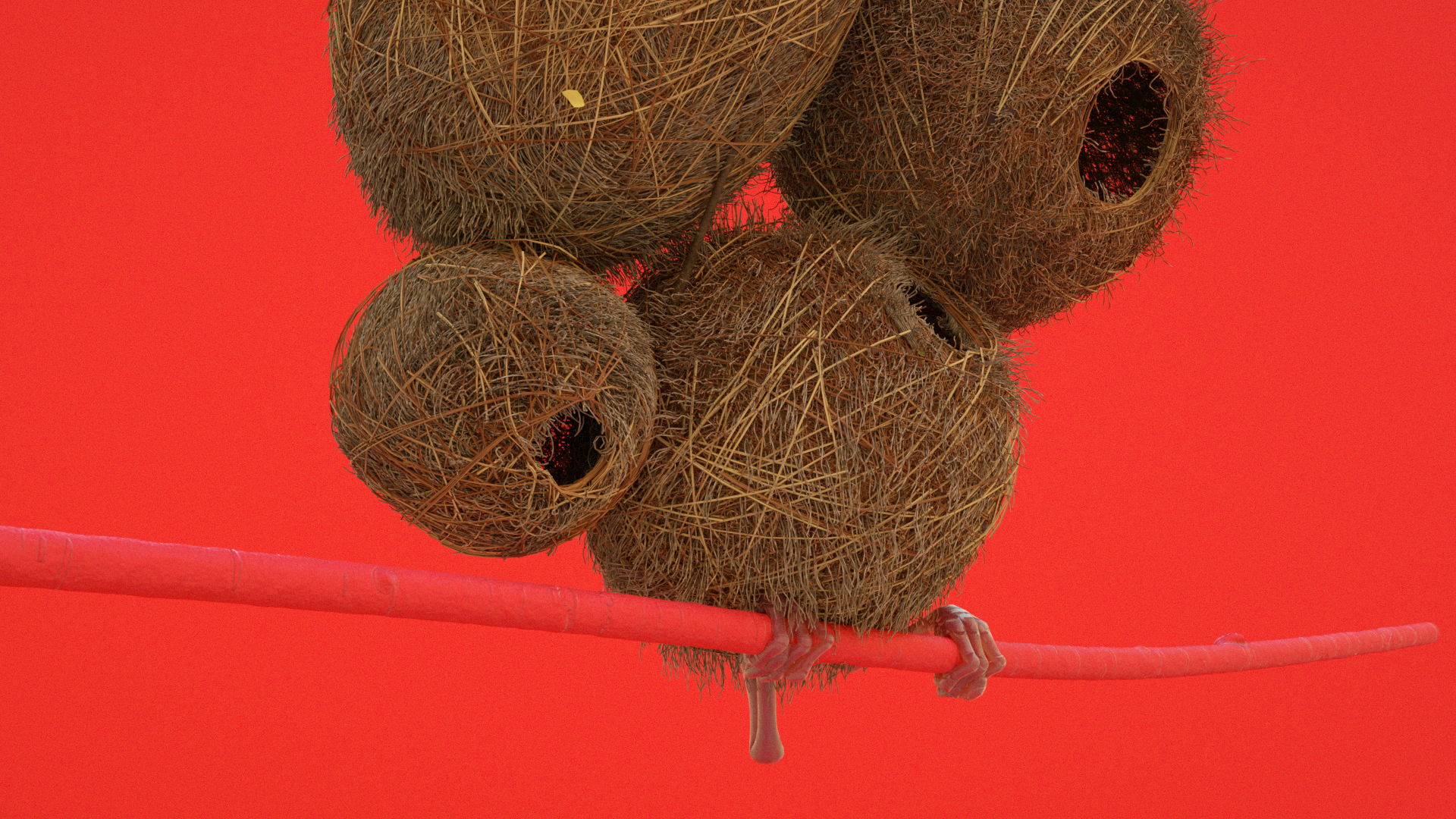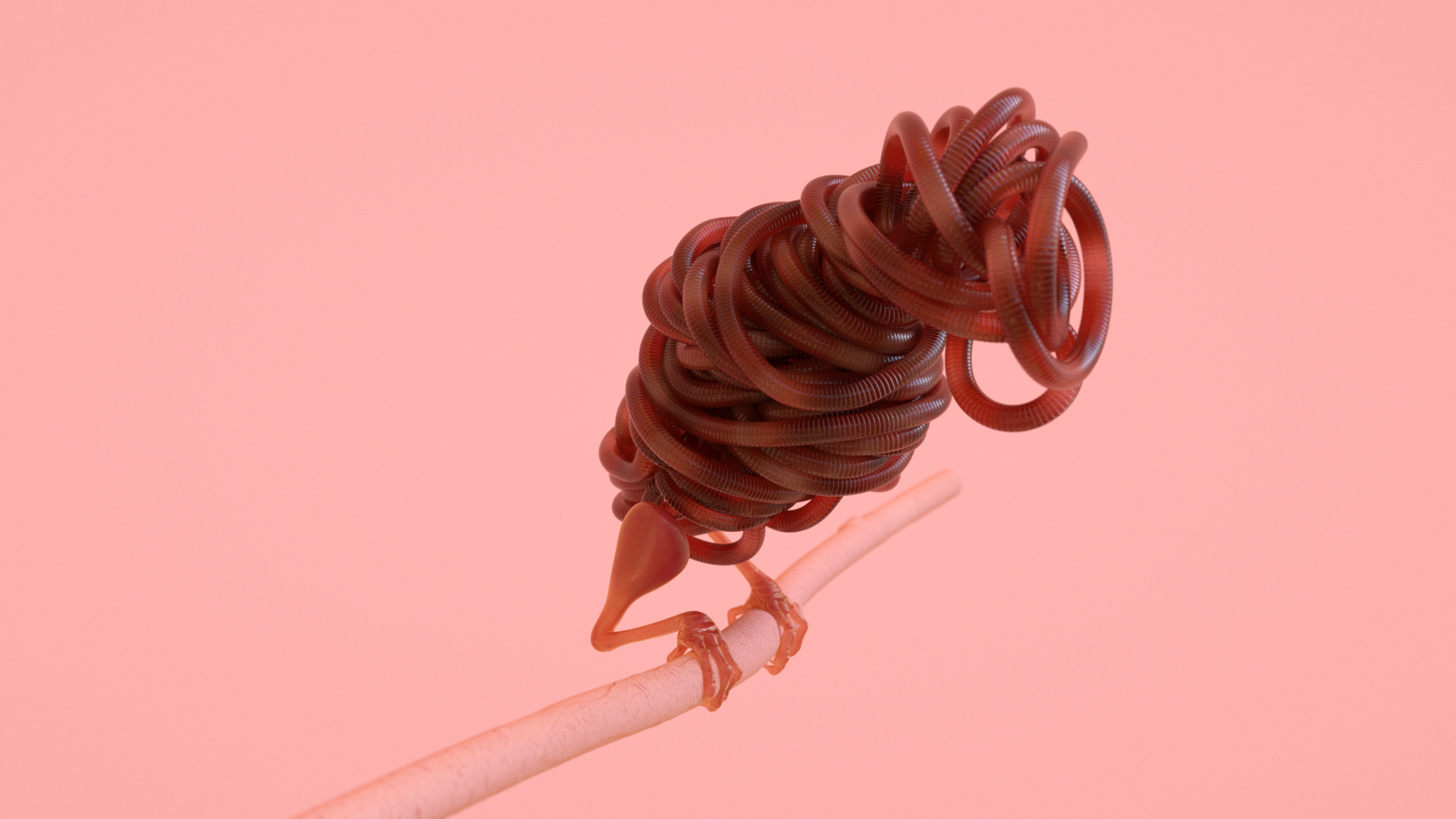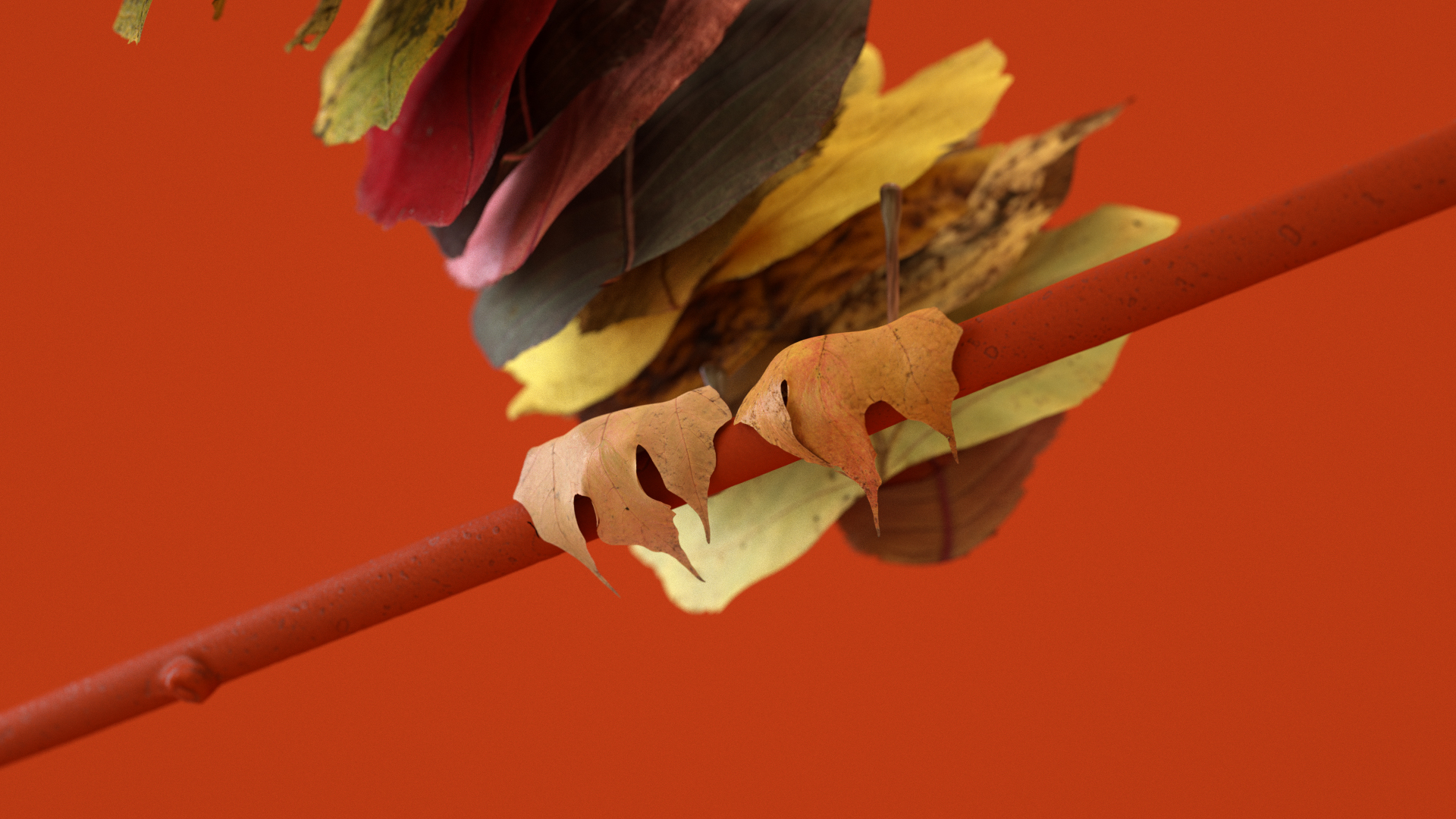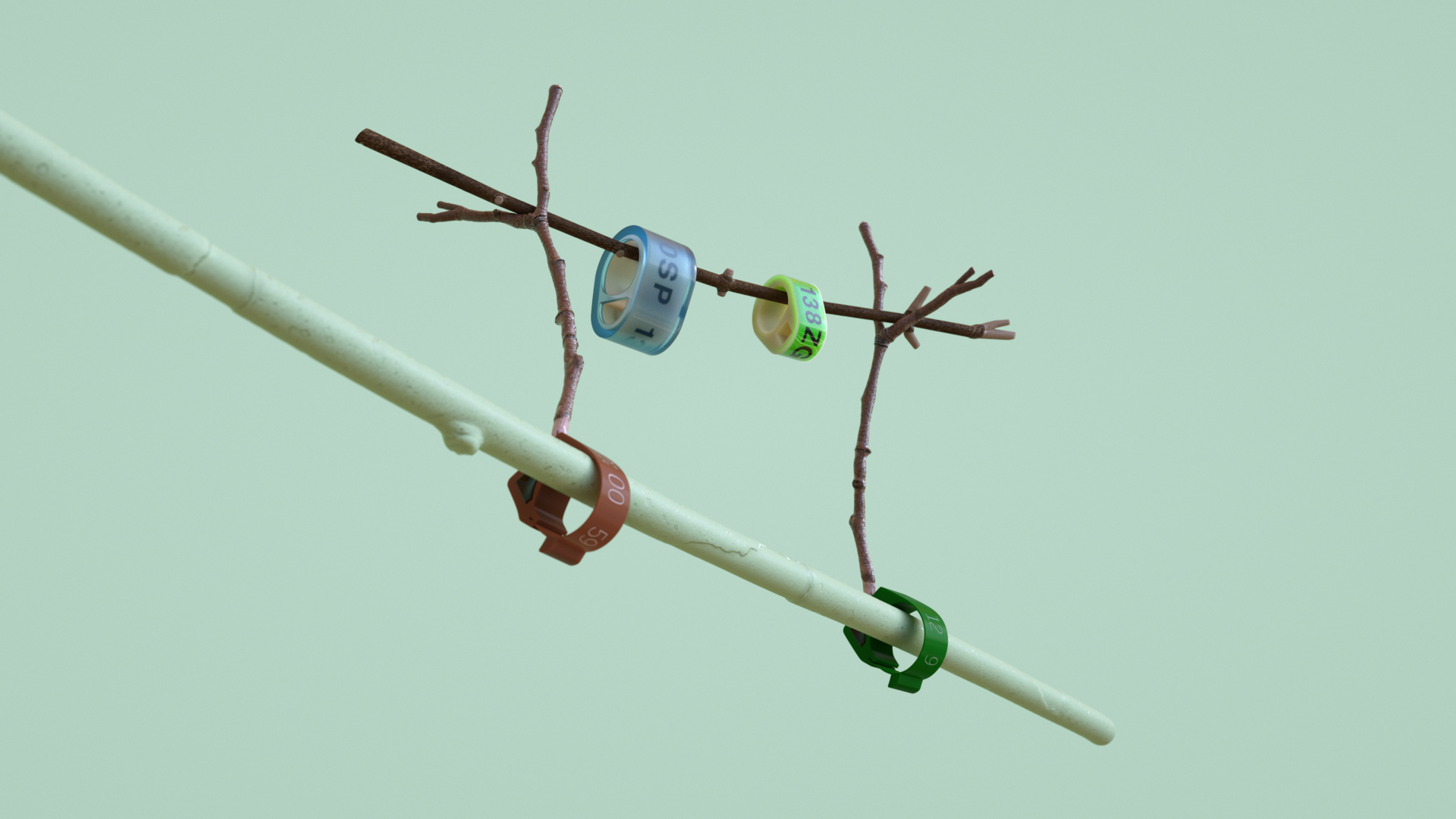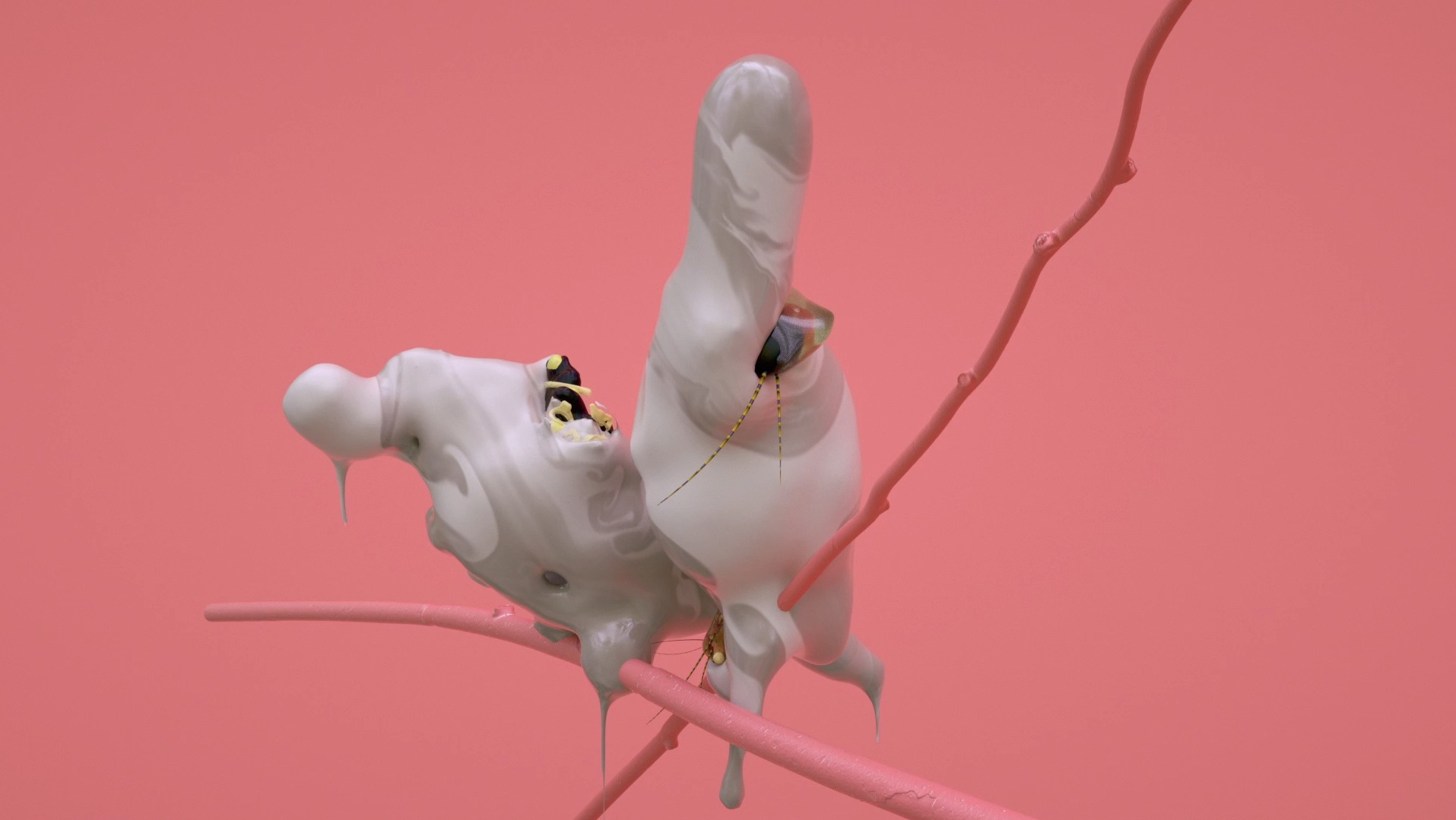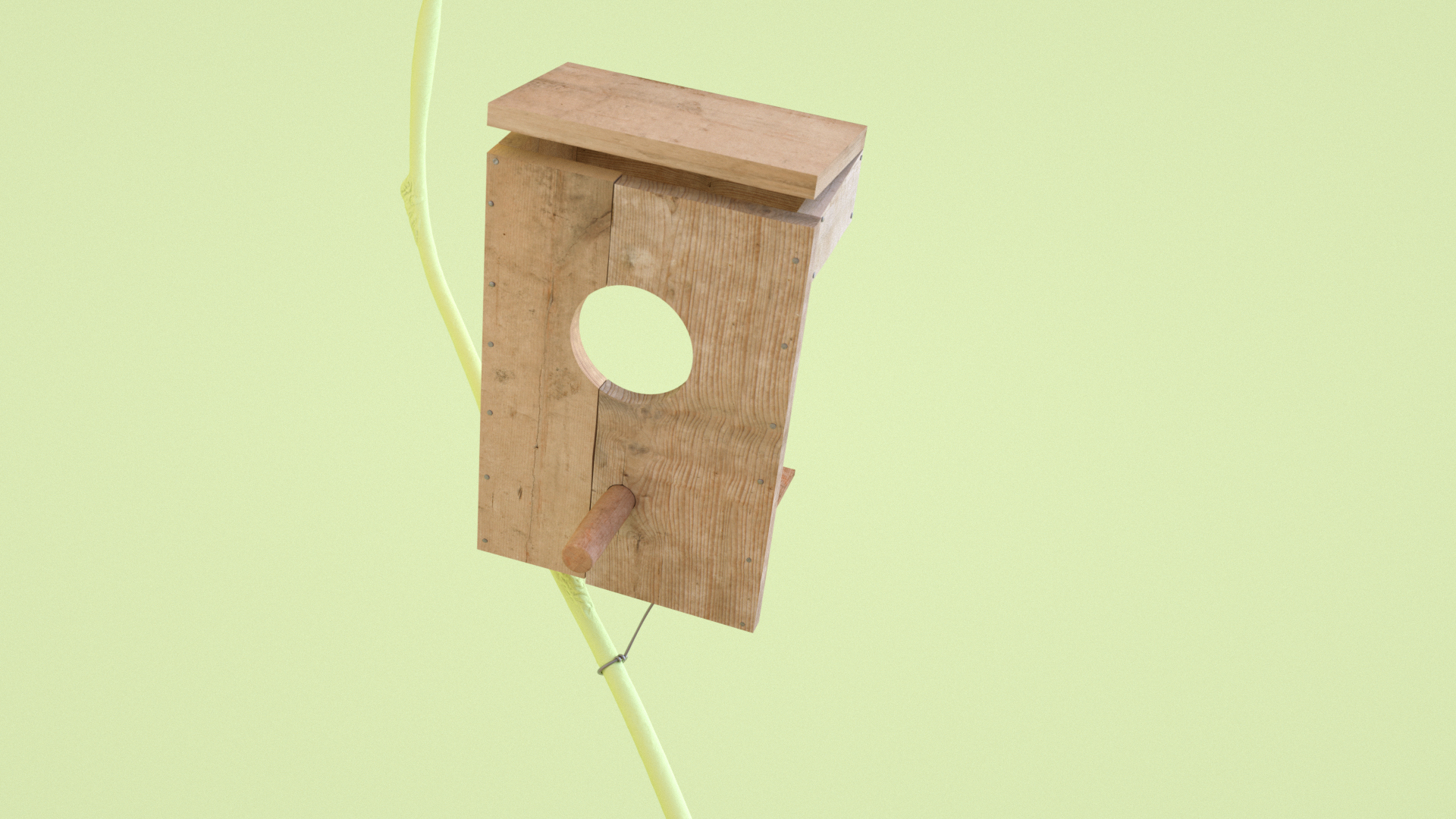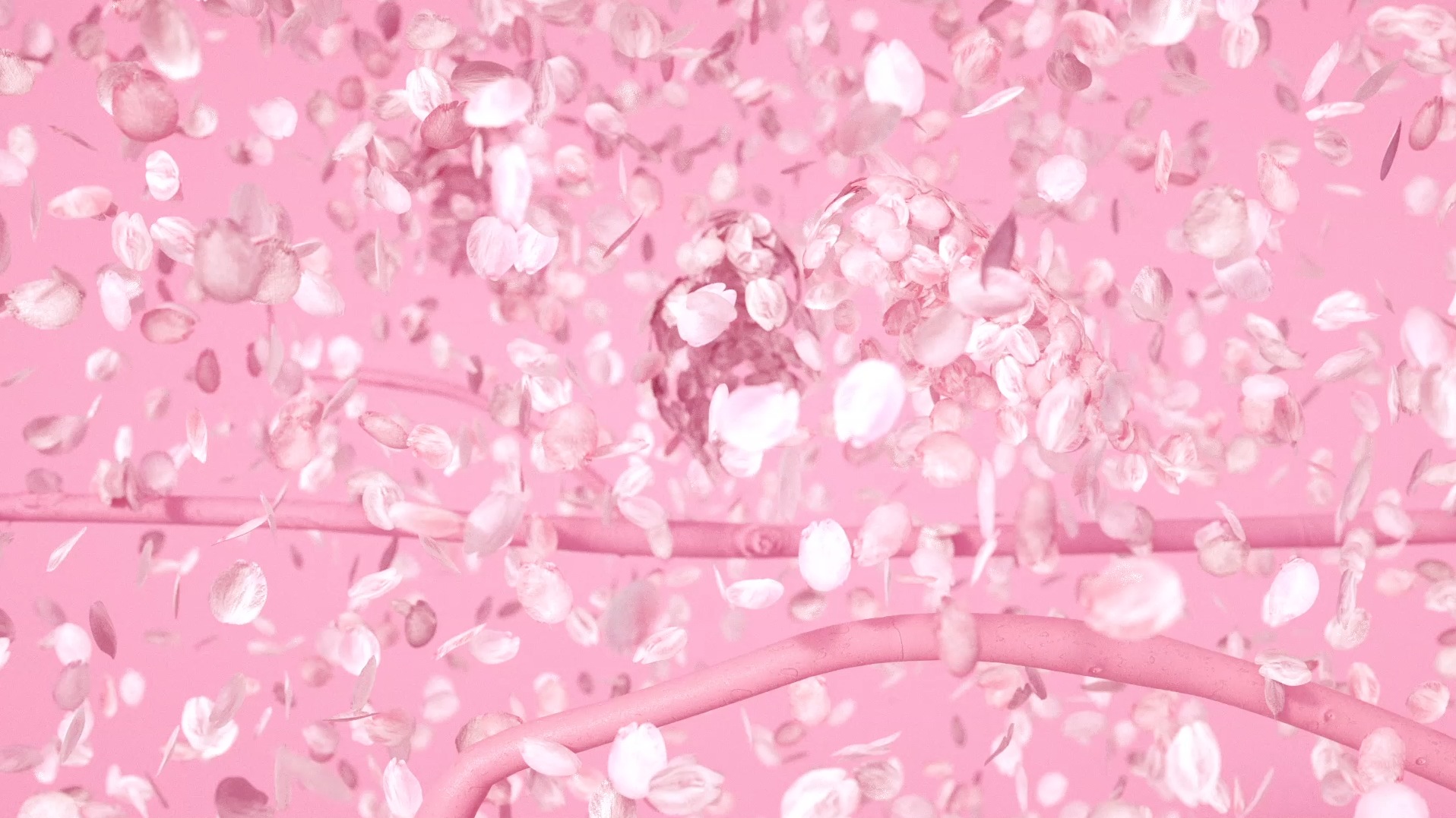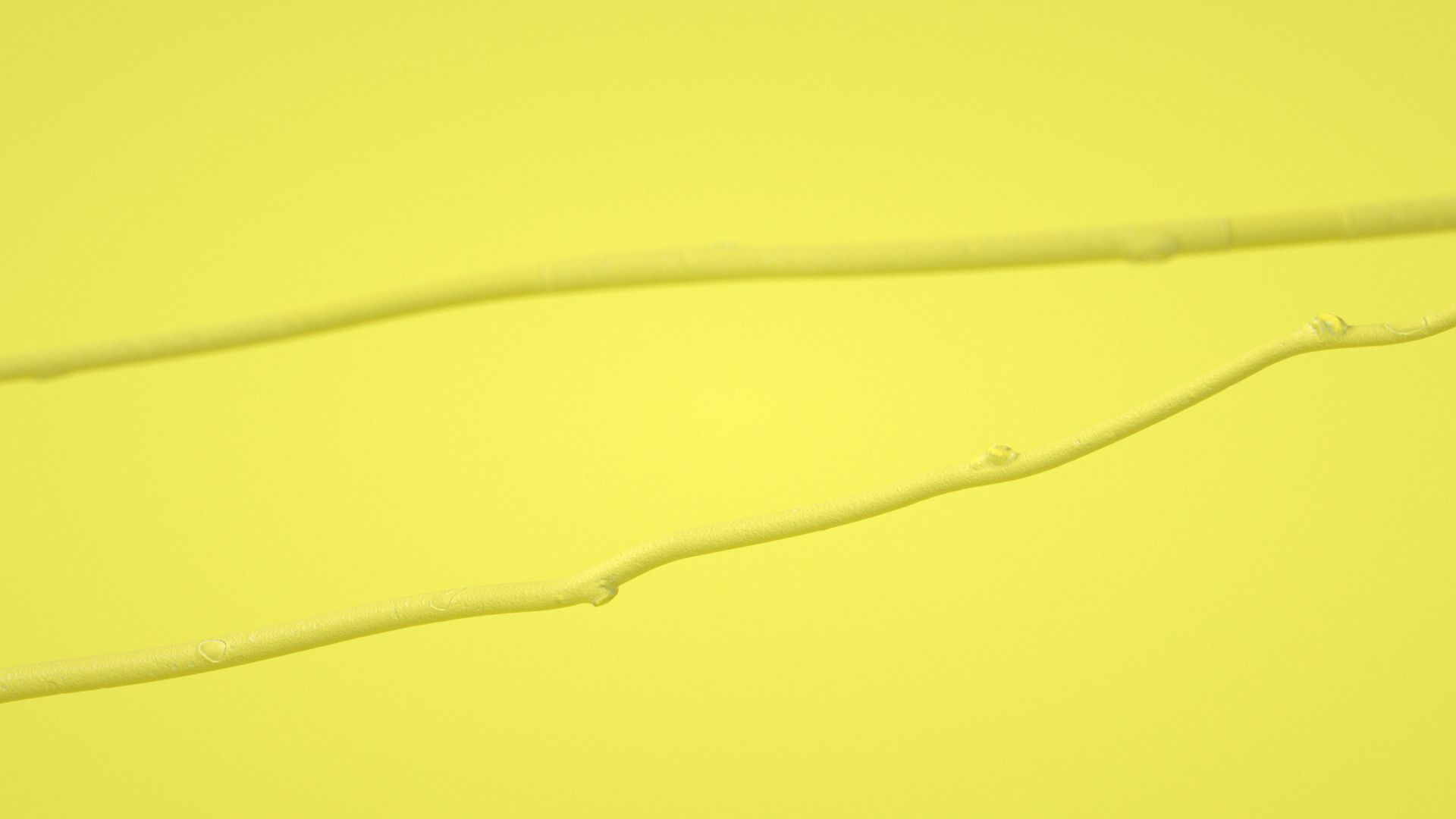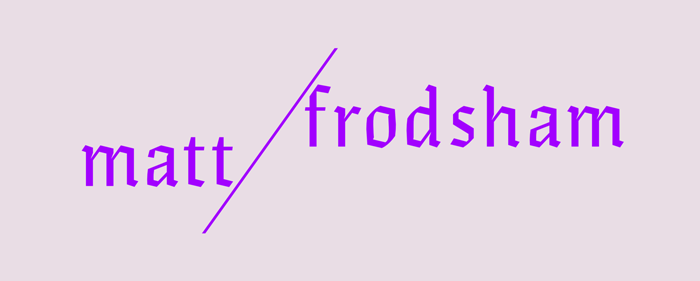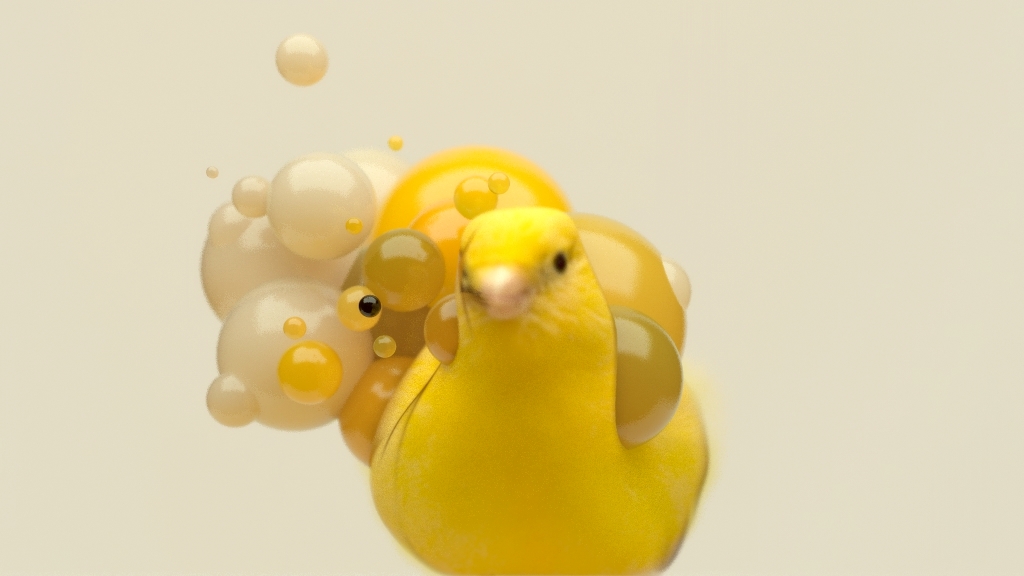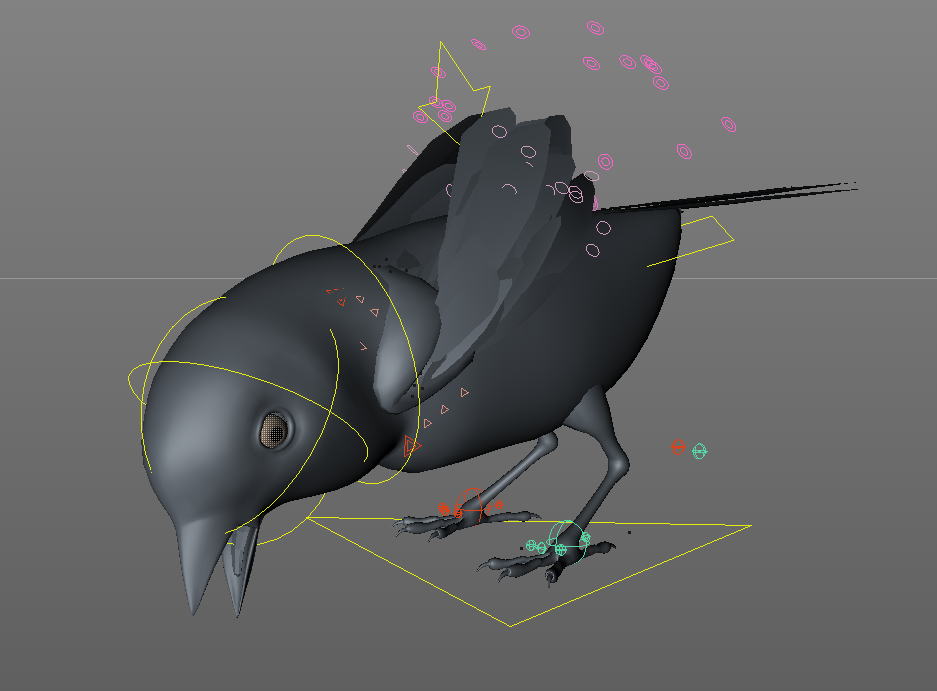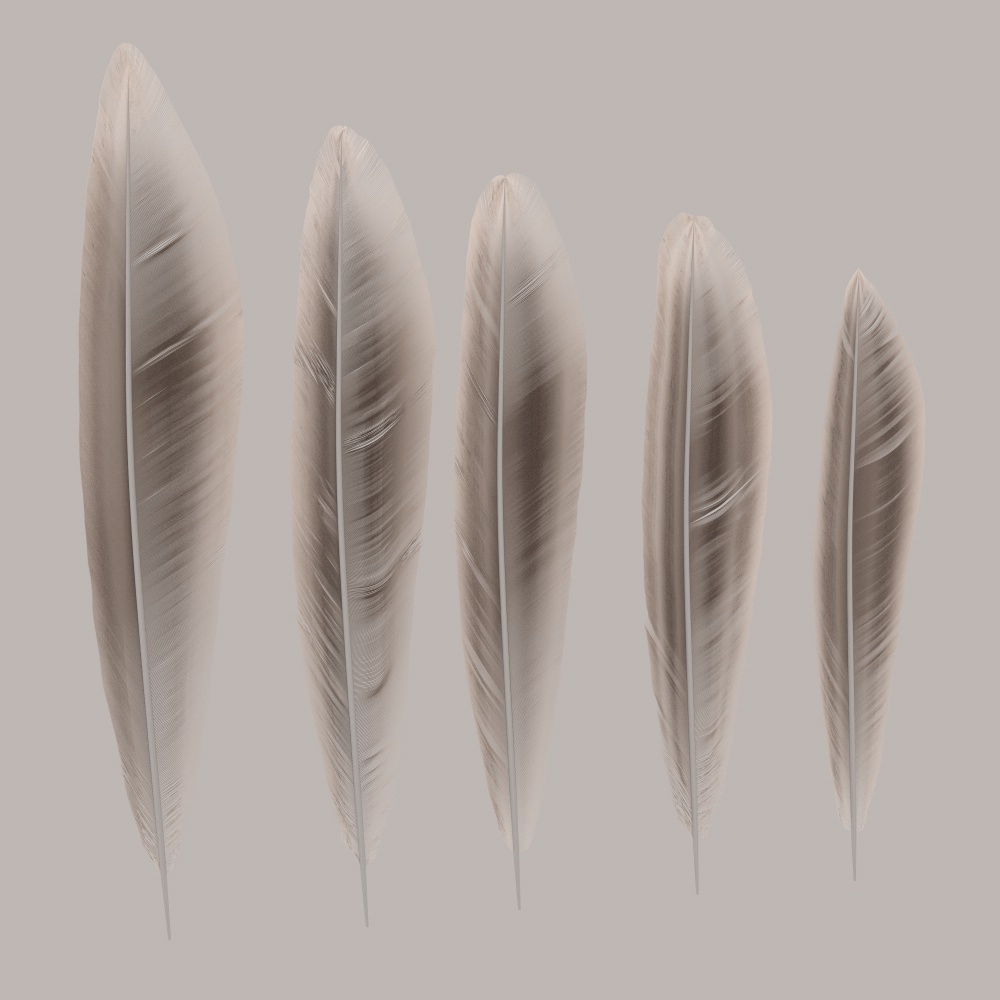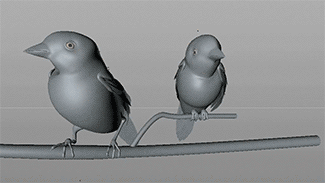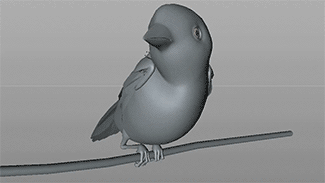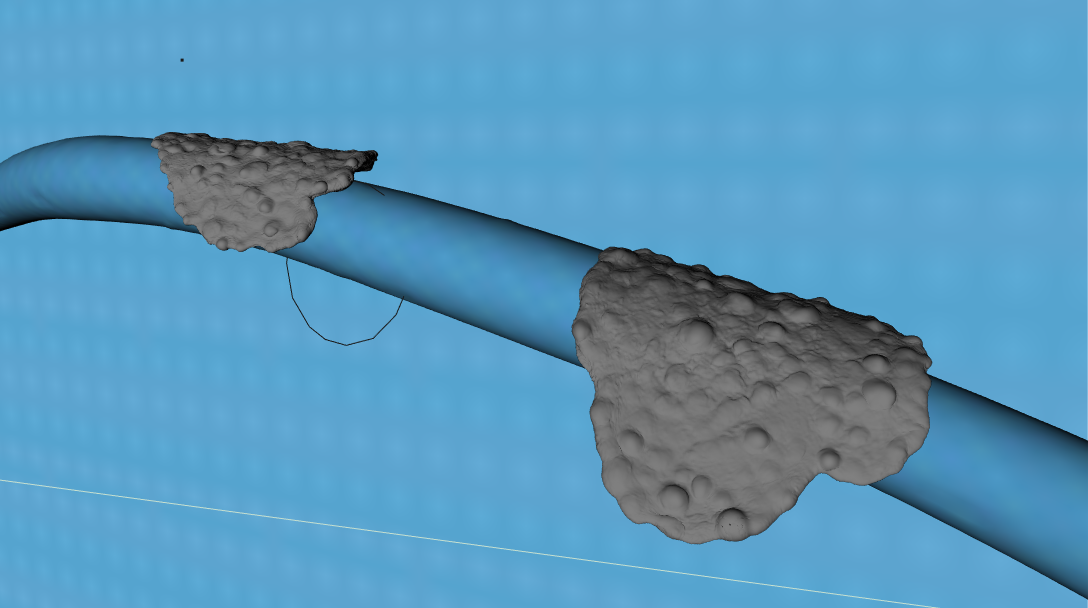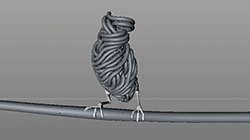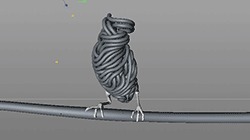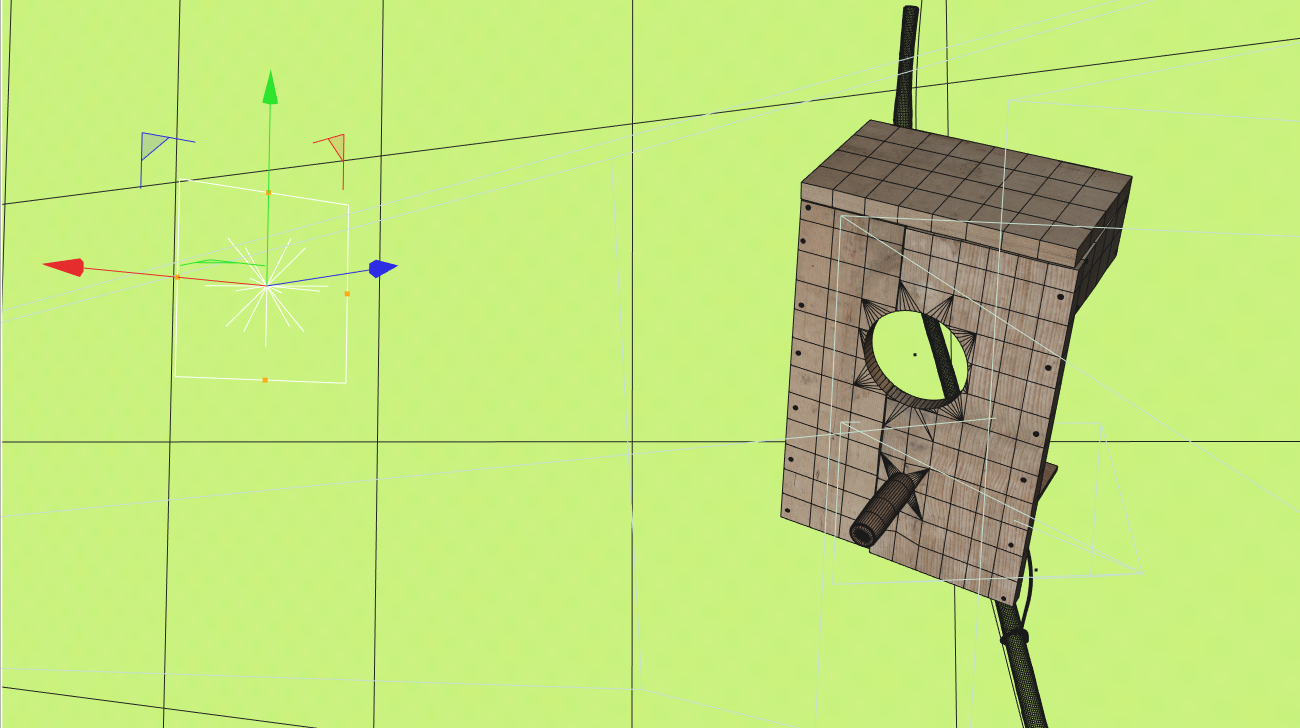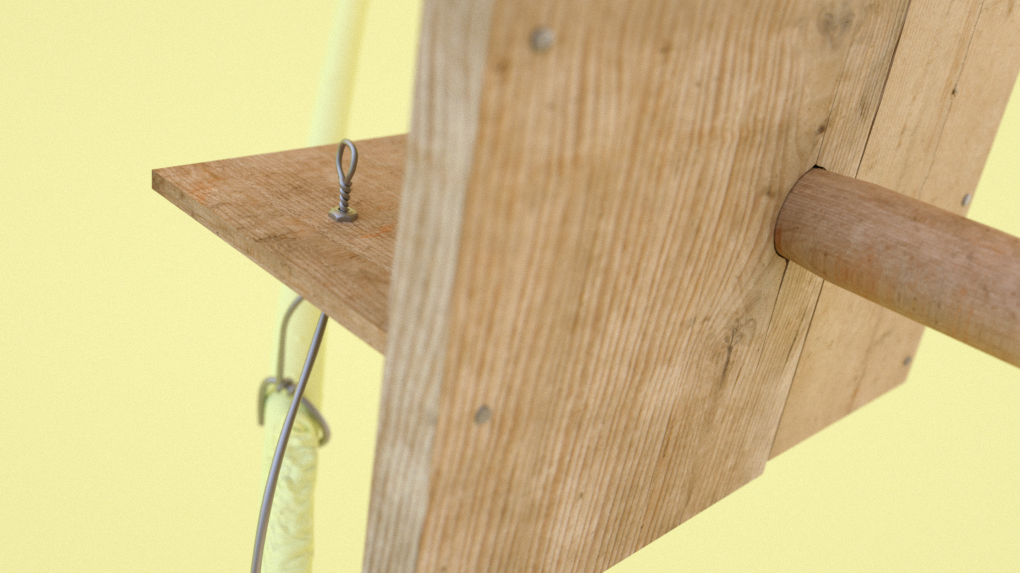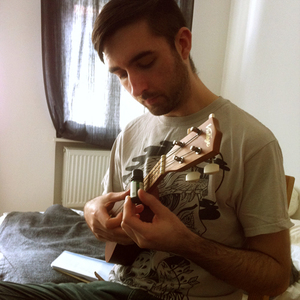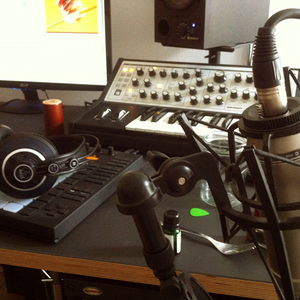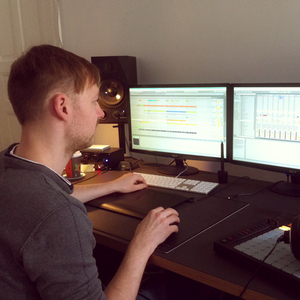MAKING OF - BIRDS
INTRODUCTION
Starting points, a look behind the scenes, and some leftovers. A brief insight into some of the processes for what will forever be one of my favourite projects. I'm so pleased that I was able to make this light-hearted film with Zeitguised that was as fun to make as you might imagine. It was a pleasure to work alongside the following artists:
Chris Hoffman | Katha Niedermeijer | Marian Pramberger
VIEW PROJECT WITH FULL CREDITS
Watch the video below for an overview and read on further for a more detailed account.
CONCEPT
The initial conception of Birds actually took place in 2011 during a pitch process that actually led to one of my other favourite projects with Zeitguised, MTV Charts. We made some motion tests and rough frames using footage and images of real birds, featuring geometric abstractions being affected by their colour and movement. The 'strugglers' won through for that project but our birds idea sat quietly chirping away for a couple of years, waiting to be set free.
CONSTRUCTION
During the early planning stages we actually planned to film real birds in a makeshift studio environment, with the intention to somehow track and composite our constructions alongside and on top of them. Sparrows were chosen because they are so familiar and common, as well as having fairly neutral but varied colours.
In the meantime I modelled and rigged a CG bird, making sure I had enough control to make precise movements. I didn't worry about the look or keeping it absolutely anatomically correct; during the next planning stages it became clear that we wouldn't try to render realistic birds, or in fact feature real birds after all. In order to deconstruct the forms and motion it was important to have something fairly close as a starting point.
During the building process I made several kinds of feathers for the wings and plumage (for a few weeks I became quite the expert on avian anatomy) and started to populate sections of the body with them. These early tests eventually developed into one of the final shots in the film featuring an incomplete hull of feathers.
Technical note: This was the first major project that I used Octane for, and the lack of MoGraph shader support was a big hurdle for colouring the feathers. Instead of the colour being driven by the texture I used an awkward/heavy setup using selections, falloffs, and a lot of duplicated geometry/materials.
By far the most important aspect of the early 'construction' part of the project was animating the birds. As we had originally planned to try and track live birds, my next idea was to essentially 'hand track' found footage to translate motion to my bird rig. There was nothing particularly technical about this, I simply placed reference videos in a spare viewport so I had precise frame references and studied them closely. I animated the large movements before doing a second pass and really scrutinising the minute twitches.
It was a fascinating process that I replicated while making the From Hell 'Holy War' music video, which also featured a lot of deteriorated animated animals. Although the mood, visuals and soundtrack were as far away from Birds as you could imagine, the workflow was pretty similar.
DECONSTRUCTION
Once we had basis for movement Chris, Katha and I started to experiment freely; exploring form, colour and texture. Using Octane meant we could play with how things looked, the speed allowed us to work fluidly between experimentation and visual development. A lot of the tests revolved around attaching objects to the animated joints or surfaces; the earliest examples took inspiration from the old style-frames from 2011 using mainly geometric shapes. It transpired that almost anything sat on a branch retains a certain bird-like charm and familiarity if it twitches in a similar way.
It may seem excessive to have produced such intricate animations using 'real' bird geometry only to tear it all down, but I can say without a doubt that the 'soul' of the birds would not come across so naturally through the abstractions without this stage. Starting with such a solid library of base animations meant we weren't relying on trying to animate the bird motion while experimenting with the abstracted forms, which I think would have yielded totally different result.
Flick through a selection of stills from these early tests below...
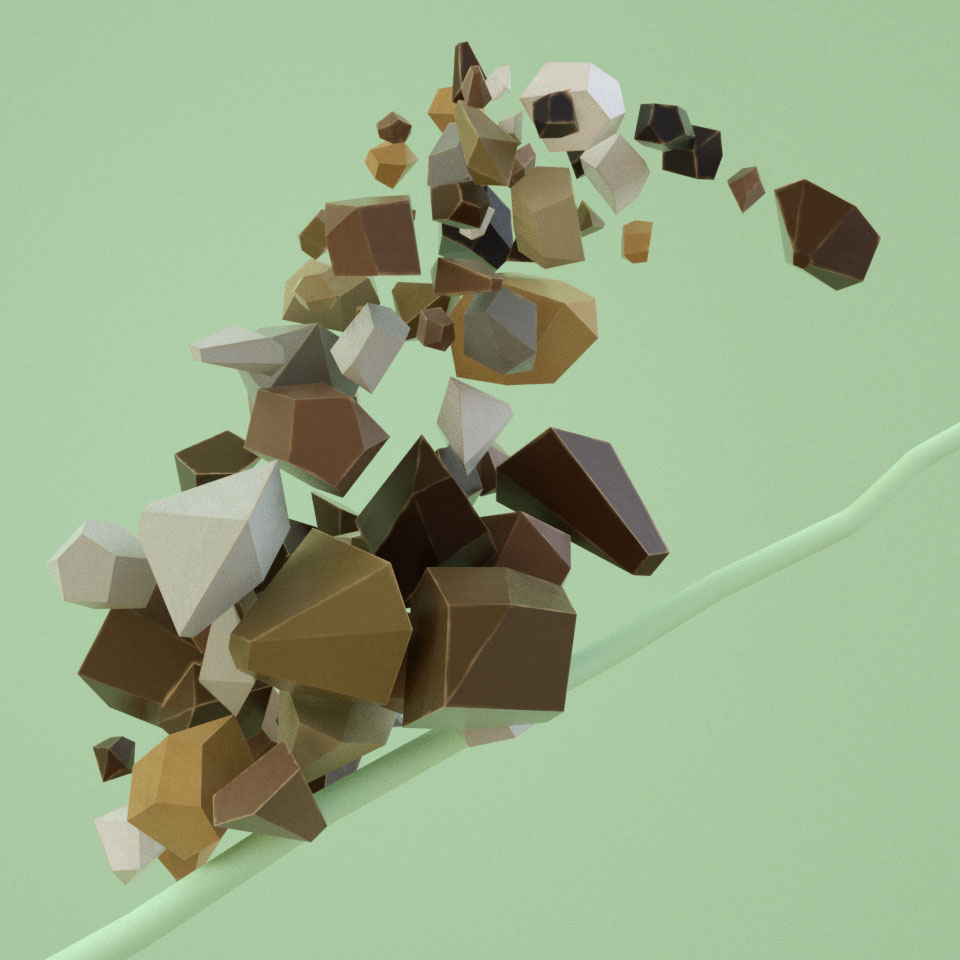

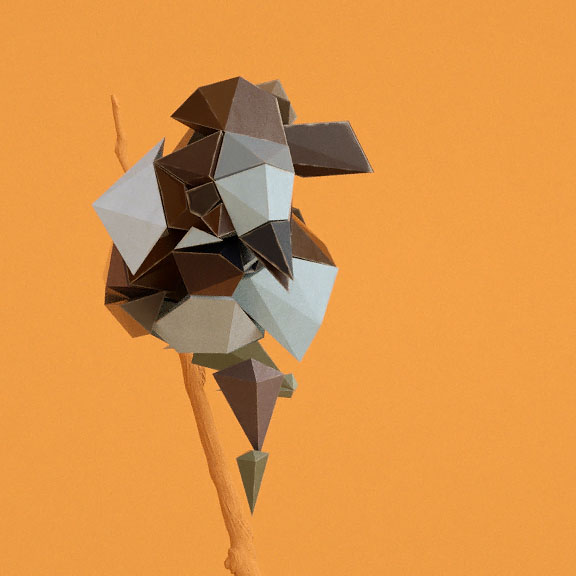
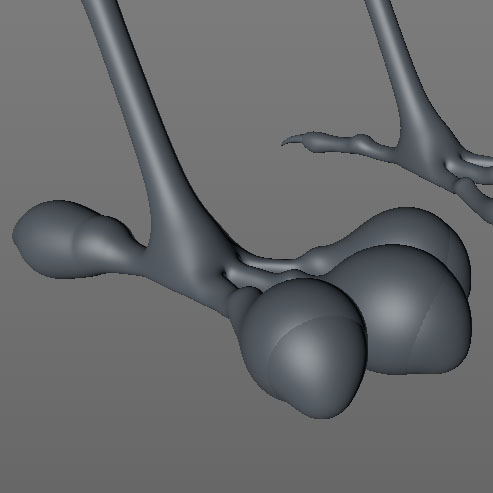
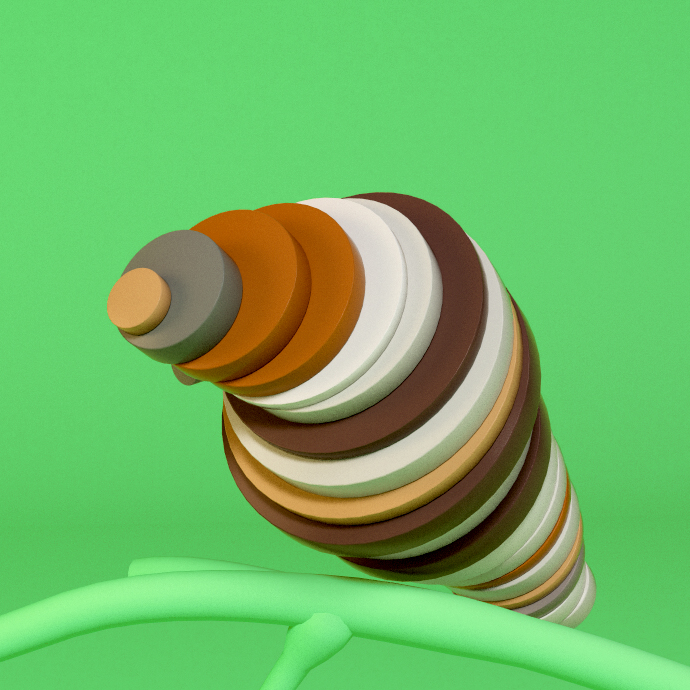

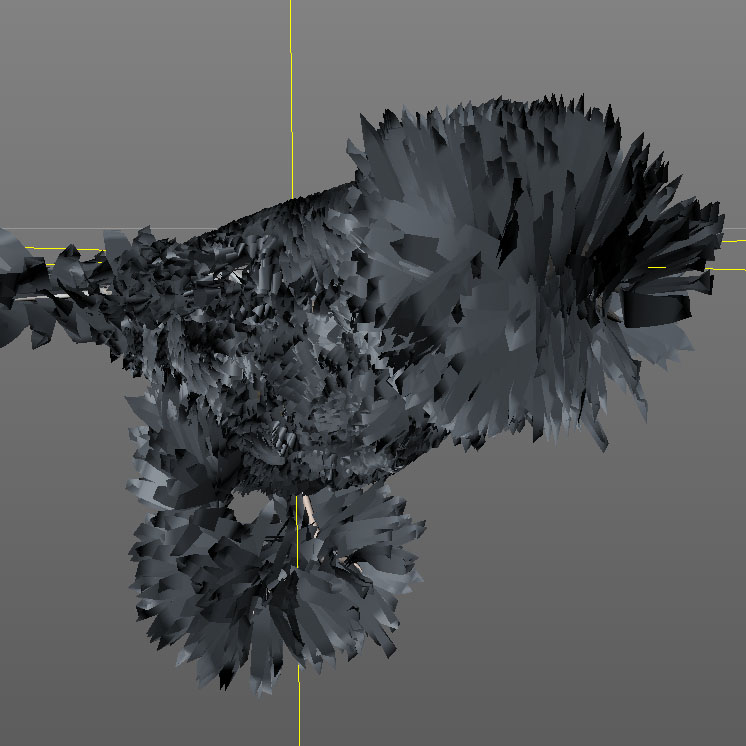
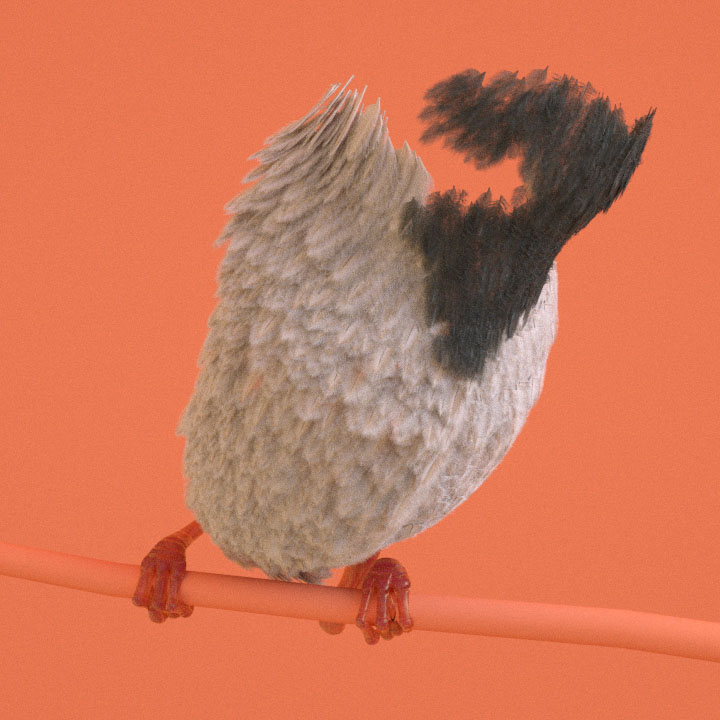
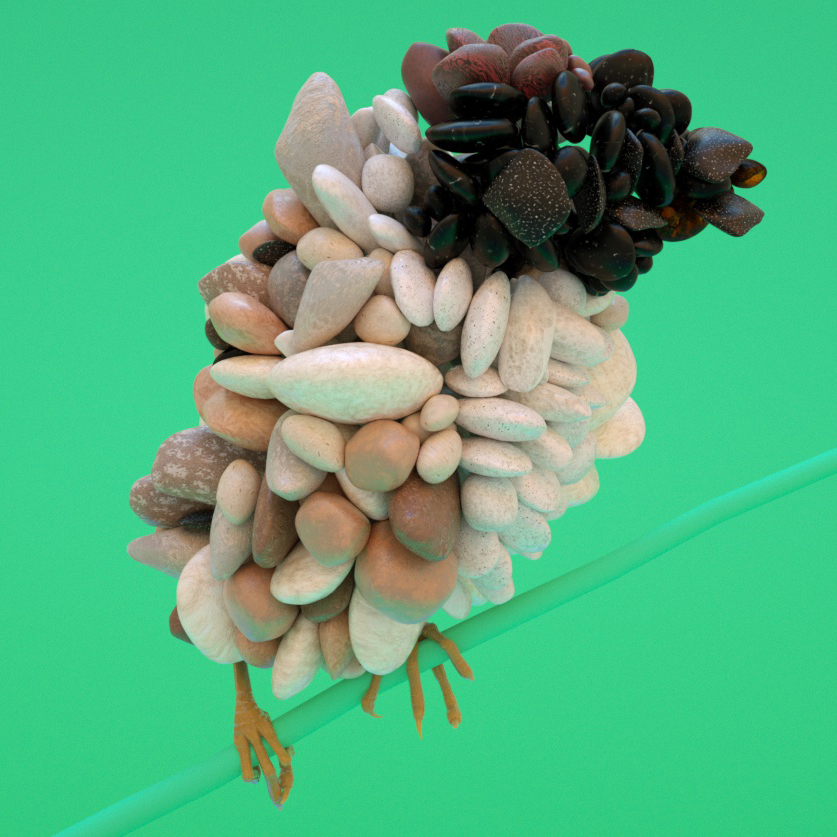
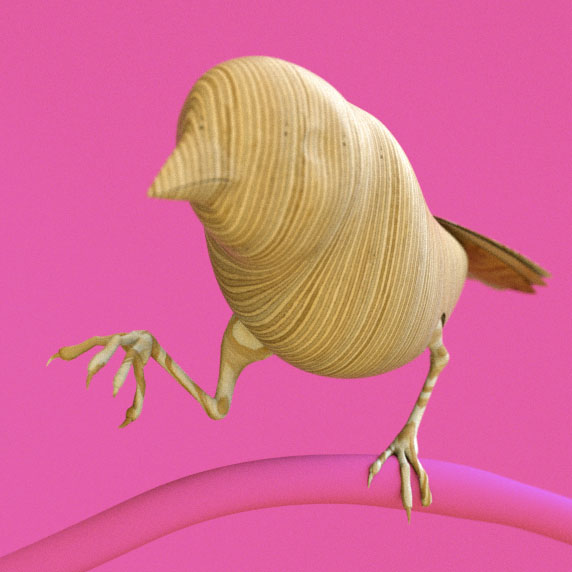
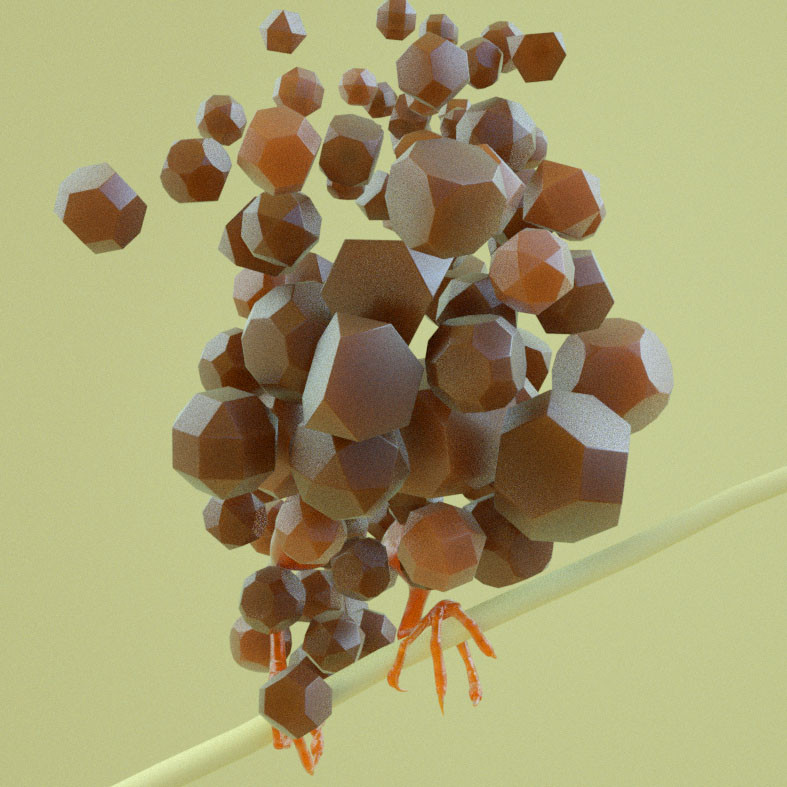
RECONSTRUCTION
The final concept actually resolved itself very organically; as we continued to explore there was a lot of humour to be found in feeding bird related ephemera back into the original animations. We started to expand and rebuild the early tests with these very familiar and iconic things that humans attribute to birds in an everyday sense: Feathers, twigs, leaves, eggs, nests, worms, shit...
One of my favourites is the sliced boiled egg, which evolved from one of the very first tests I tried out with semi-dynamic coloured discs placed along the bird's body. The forms are the most simple in the film, the motion is taken almost directly from the original animations, and the idea to add cornflakes to the feet completed the breakfast theme perfectly.
My case studies often get pretty technical, but I'm sure most of the shots are self explanatory once you see the original bird animations alongside their abstracted counterparts. There was a lot of dynamic simulation but the majority work was very hand crafted (in the digital sense) due to the sculptural and textural emphasis.
Technical note: A lot of the animation was made using native tools in C4D, except UniFlex for some of the organic simulations and X-Particles for the blossoms and geometry skinning.
The worms shot was also really fun to work on. This was simply a case of filling the bird's body geometry with long lengths of dynamic splines then letting them unravel. Experimenting with various settings and forces meant the results ranged from very stiff and tightly sticking to the original form to completely falling apart.
As I mentioned earlier, we used Octane to render the film. This well-lit studio setup with few lights and a HDRI is absolutely ideal and the render cleans up really fast for most materials. We found the scattering mediums took a lot longer but all the shots still rendered in a reasonable time. There were a few workarounds needed regarding C4D integration, but nothing that limited us.
VIBRATIONS
One of my favourite parts of the project was making the sound with Marian. Taking a pinch of inspiration from a well known reggae song about birds, we had a lot of fun recording different instruments and makeshift noise makers in his studio. Using Ableton Live, Marian sequenced the music and sound effects to the video edit; pairing musical phrases played by different instruments to specific shots to emphasise movements.
Recording almost all analogue instruments (only the drums were programmed) and using a lo-fi sound fit well with the aesthetic. Although the film is entirely CG and everything is rendered and lit in a very clean way, I think the natural aspects of the look and movement are the most prevalent.
THE FILM
